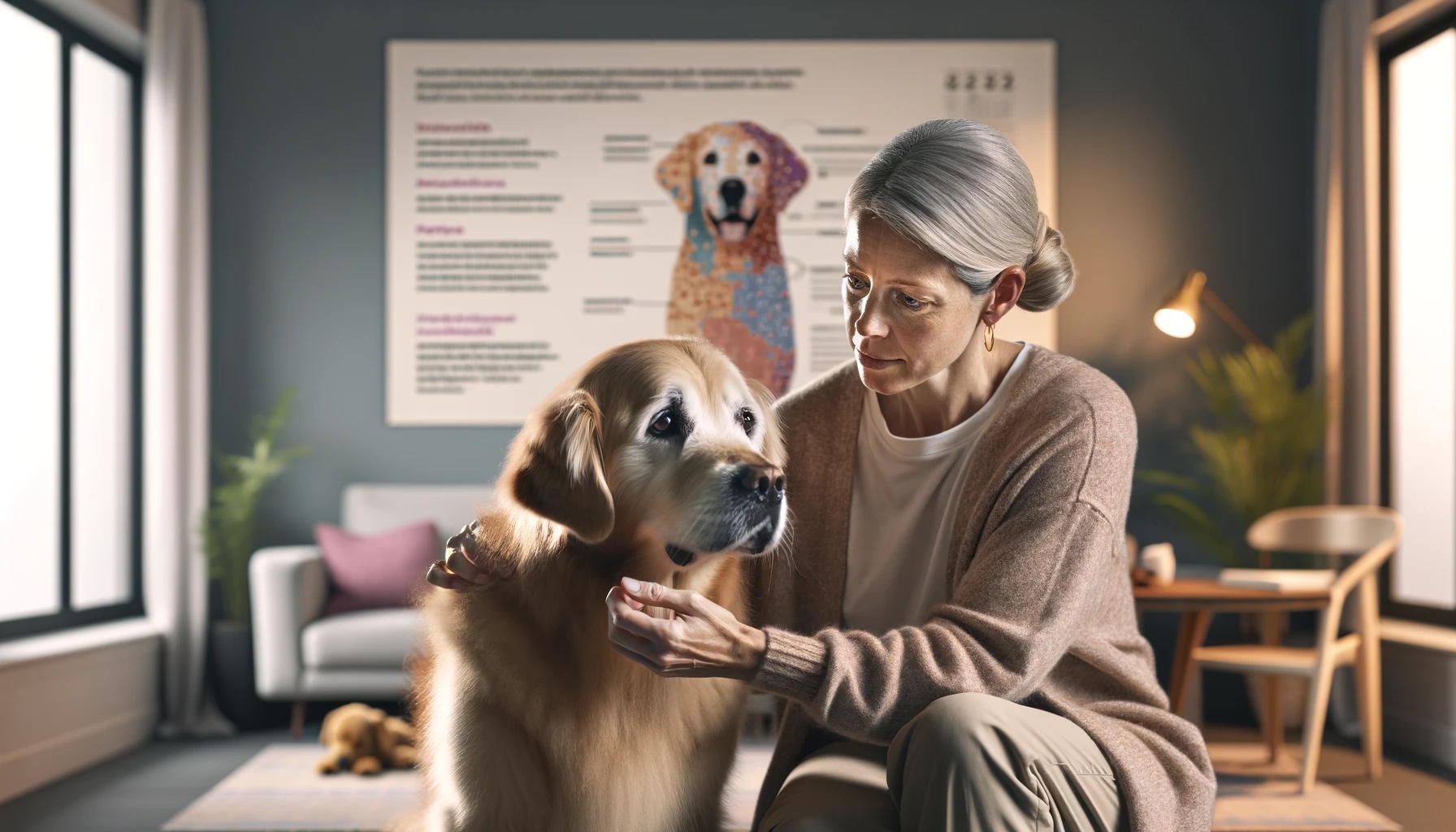Home>Health & Wellness>Common Health Issues>Cognitive Health>Understanding Canine Cognitive Dysfunction: A Guide for Dog Owners


Cognitive Health
Understanding Canine Cognitive Dysfunction: A Guide for Dog Owners
Modified: November 27, 2023
Canine Cognitive Dysfunction (CCD), often likened to Alzheimer's in humans, is a condition that affects the brain of aging dogs. Read on to find out more.
(Many of the links in this article redirect to a specific reviewed product. Your purchase of these products through affiliate links helps to generate commission for Pawsomeoldies.com, at no extra cost. Learn more)
Canine Cognitive Dysfunction (CCD), often likened to Alzheimer’s in humans, is a condition that affects the brain of aging dogs. This blog post aims to provide comprehensive insights into CCD, its symptoms, management, and ways to enhance the quality of life for our furry friends experiencing this condition.
What is Canine Cognitive Dysfunction?
Canine Cognitive Dysfunction is a degenerative brain disease in older dogs. It’s characterized by a decline in mental faculties, leading to changes in behavior, memory, and the ability to learn. Dogs typically start showing signs of CCD around nine years of age or older[^1].
Recognizing the Symptoms
The symptoms of CCD can vary but often include:
- Disorientation: Dogs may appear lost in familiar places.
- Changes in Social Interactions: They might become unusually clingy or avoidant.
- Sleep Disturbances: Altered sleep patterns, like wandering at night.
- House Soiling: Previously house-trained dogs might start having accidents.
- Activity Level Changes: Less interest in play or increased restlessness.
- Anxiety and Learning Difficulties: Increased anxiety or difficulty in following commands.
Causes of CCD
CCD results from age-related changes in the brain. Neurons, vital for brain function, deteriorate over time. This degeneration, including the buildup of beta-amyloid plaques, disrupts brain function, leading to the symptoms observed in CCD[^2].
Diagnosis and Treatment
Diagnosing CCD involves ruling out other conditions with similar symptoms through physical exams and tests. While there’s no cure, treatment options include:
- Dietary Changes: Prescription diets rich in antioxidants and fatty acids.
- Environmental Enrichment: Regular play and exercise.
- Medications: Such as Selegiline.
- Supplements: Consult your vet for appropriate supplements.
The Importance of Early Intervention
Early intervention can significantly slow the progression of CCD and improve your dog’s quality of life. This includes dietary management, environmental enrichment, and medical treatment.
Managing CCD at Home
As a pet owner, you can play a crucial role in managing CCD:
- Maintain a Routine: Consistency can help reduce confusion and anxiety.
- Mental Stimulation: Engage your dog in interactive games and training.
- Physical Exercise: Regular walks and playtime.
- Comfortable Environment: Create a safe and familiar space for your dog, minimizing changes in their surroundings.
- Patience and Understanding: Remember that your dog’s behavior changes are due to a medical condition.
The Role of Diet in Managing CCD
A diet rich in antioxidants and omega-3 fatty acids can support brain health. Some commercial diets are specifically formulated for brain health in aging dogs. Consult your veterinarian for recommendations.
Medications and Supplements
Medications like Selegiline can help manage CCD symptoms. Supplements, such as those containing omega-3 fatty acids, antioxidants, and other brain-supporting nutrients, can also be beneficial. Always consult your vet before starting any new medication or supplement.
The Power of Environmental Enrichment
Environmental enrichment plays a crucial role in managing CCD. This includes:
- Interactive Toys: Toys that stimulate their mind.
- Regular Exercise: Keeps them physically and mentally active.
- Social Interaction: Spending quality time with your dog.
Understanding and Coping with Behavioral Changes
Behavioral changes in dogs with CCD can be challenging. It’s important to:
- Stay Calm: React calmly to accidents or unusual behavior.
- Seek Professional Help: A behaviorist can offer strategies to manage changes.
- Supportive Care: Love and patience go a long way in supporting a dog with CCD.
The Importance of Regular Veterinary Visits
Regular check-ups are crucial for monitoring your dog’s health and adjusting their treatment plan as needed.
When to Consider Advanced Care
In some cases, advanced care like MRI scans may be necessary to rule out other conditions. Discuss with your vet when such measures are appropriate.
Living with a Dog with CCD
Living with a dog with CCD can be challenging, but with the right care and support, you can help your dog lead a comfortable life. Remember, early detection and intervention are key.
Final Thoughts
Canine Cognitive Dysfunction is a complex condition, but understanding and managing it can make a significant difference in your dog’s quality of life. With patience, care, and the right approach, you can help your aging dog navigate this stage of their life with comfort and dignity.
